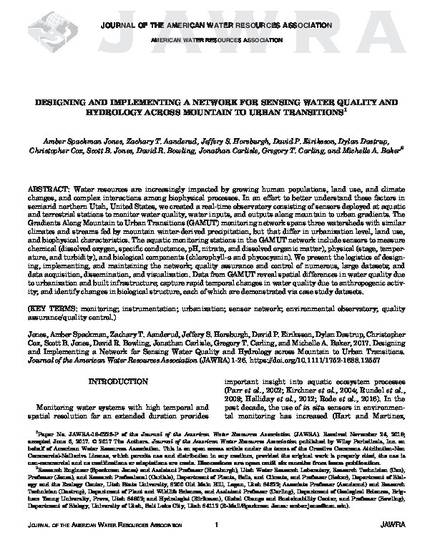
Water resources are increasingly impacted by growing human populations, land use, and climate changes, and complex interactions among biophysical processes. In an effort to better understand these factors in semiarid northern Utah, United States, we created a real-time observatory consisting of sensors deployed at aquatic and terrestrial stations to monitor water quality, water inputs, and outputs along mountain to urban gradients. The Gradients Along Mountain to Urban Transitions (GAMUT) monitoring network spans three watersheds with similar climates and streams fed by mountain winter-derived precipitation, but that differ in urbanization level, land use, and biophysical characteristics. The aquatic monitoring stations in the GAMUT network include sensors to measure chemical (dissolved oxygen, specific conductance, pH, nitrate, and dissolved organic matter), physical (stage, temperature, and turbidity), and biological components (chlorophyll-a and phycocyanin). We present the logistics of designing, implementing, and maintaining the network; quality assurance and control of numerous, large datasets; and data acquisition, dissemination, and visualization. Data from GAMUT reveal spatial differences in water quality due to urbanization and built infrastructure; capture rapid temporal changes in water quality due to anthropogenic activity; and identify changes in biological structure, each of which are demonstrated via case study datasets.
